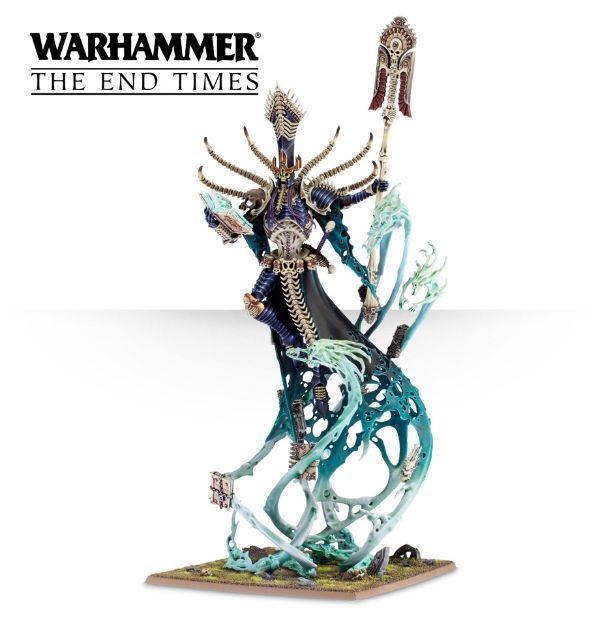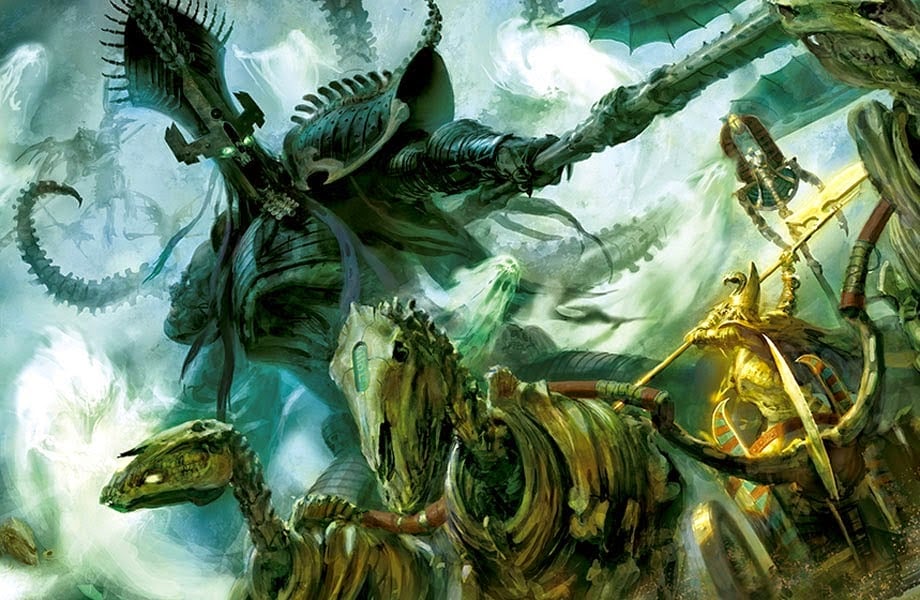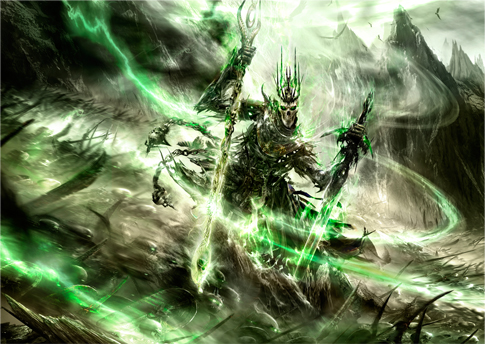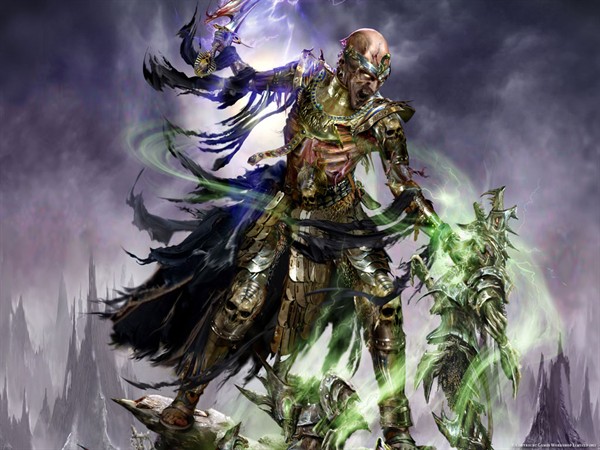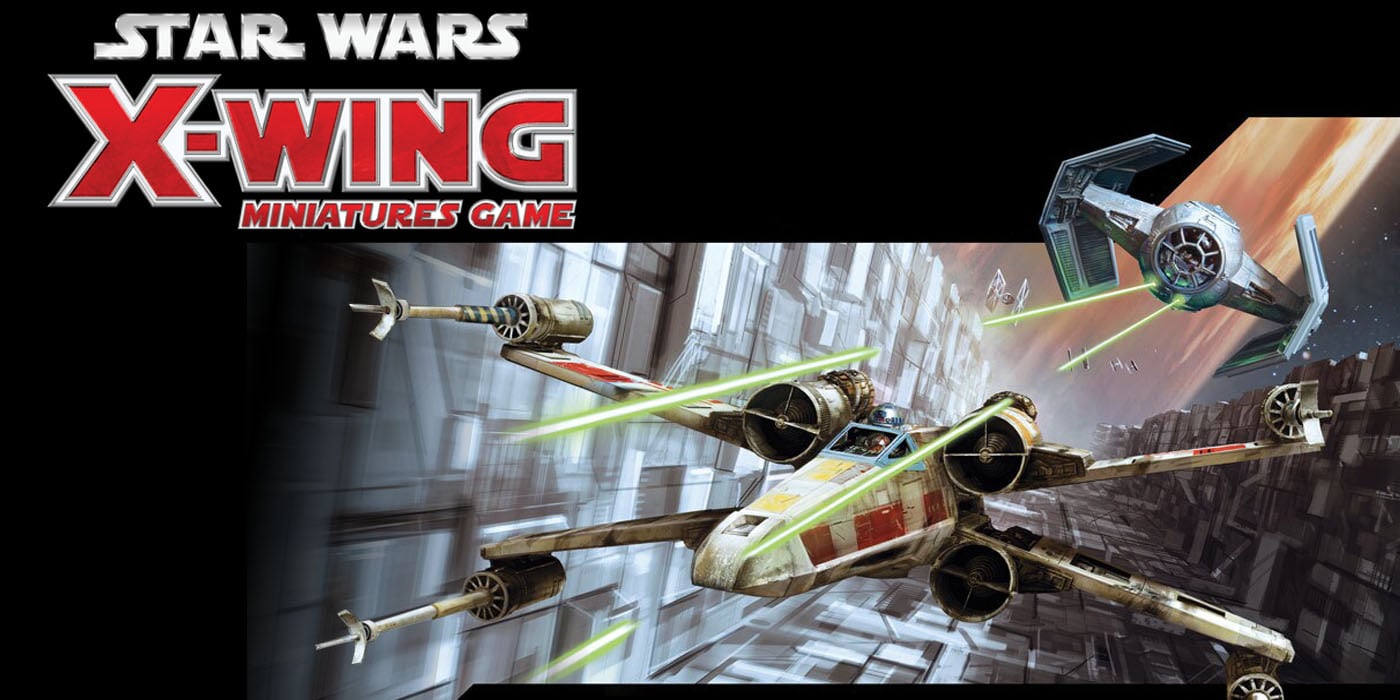Nagash: Model and Rules Review
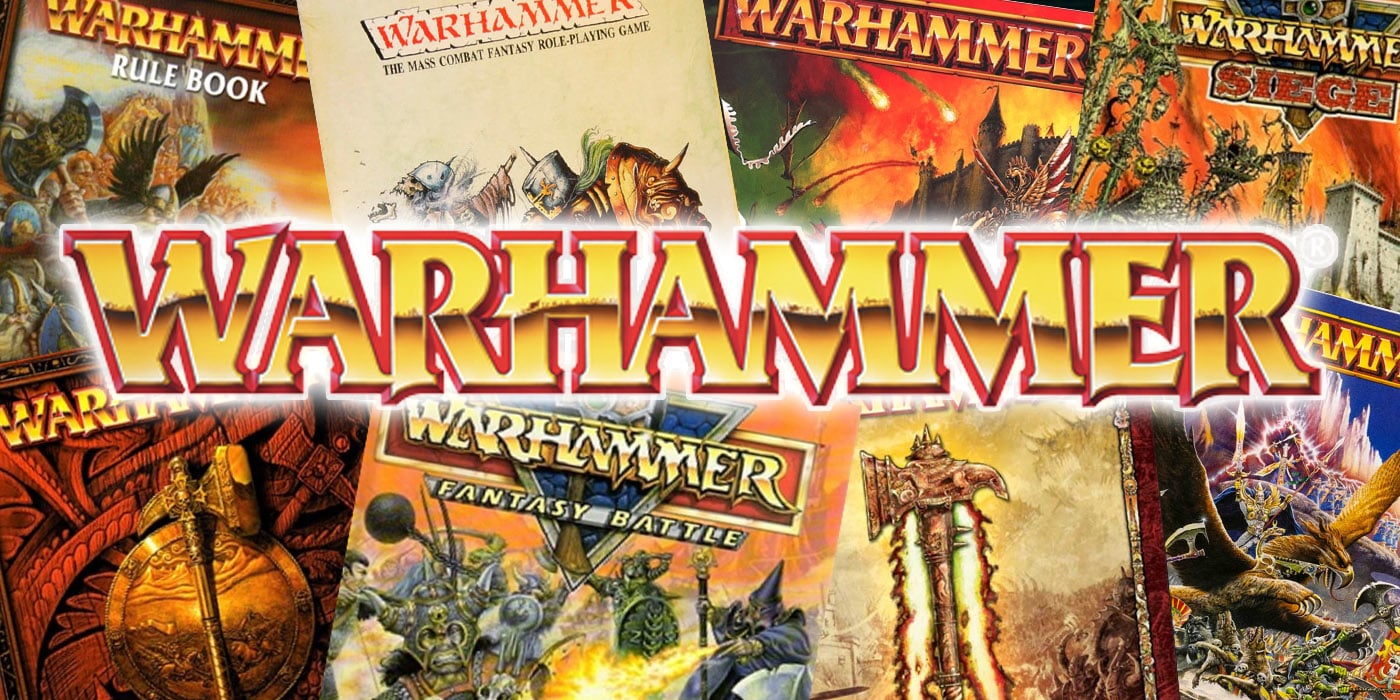
Hey guys, Learn2Eel here with an early look at the Nagash model, his prowess on the battlefield and what they could mean for competitive Warhammer Fantasy gaming.
This is easily one of Games Workshops’ best Warhammer Fantasy releases in the last decade and ranks as one of the most important by far; if the return of Nagash wasn’t enough, we also have classic heroes and heroines of all kinds returning to the fray. From Neferata – the original Vampire – to Valten – oft described as Sigmar reborn – the End Times is shaping up to be a truly epic and tumultuous rule-set for Warhammer Fantasy and will surely give it the revamp it needs to gain the popularity it deserves as a game system.
Nagash
The Model
As if this model really needs my critical analysis considering pretty much every Games Workshop fan has voiced their own opinion on it already, given the massive popularity of the release and the iconic stature of the character in question. Yet here I am and as stereotypical as it may sound given my love of all things Warhammer related, the Nagash model is truly among the most impressive miniatures I have ever seen. It has the size and scope to match an Eldar Wraithknight even though half of the height of the model is actually due to the various spirits and tendrils of magic emanating from Nagash.
The contact points on the base and for Nagash do look weak but given how my Flying Hive Tyrants never broke off their tails with even weaker and fewer contact points to the base, I feel this will be a non-issue and is only being focused upon because of the sheer size of Nagash. I think it really bears repeating that this model is absolutely titanic and that many viewers have been misled by the early, sub-par quality leaked photos – Nagash is situated on a 150x100mm base (the same as an Arachnarok Spider from the Orcs and Goblins range) and measures at roughly double the height of a Skaven Hell Pit Abomination. If I still haven’t properly intimated the scale of Nagash, just look at this incredible art-work of the Great Necromancer facing off against Settra the Imperishable – even something as large as a chariot drawn by four steeds appears miniscule next to Nagash.
On a technical level the model is a master-class and it just screams “centre-piece”, an imposing addition to any Undead collection and a statement of quality from the Games Workshop model designers. The swirling spirits, aggressive pose and multitude of additional details make for a truly incredible miniature on top of the frightening flesh and bone mixture of the Lord of all Undead. The nods to the Egyptian influences on Nehekharan society are evident with the beard made of bone, much the same as the extravagant head-piece. The bone tentacles emerging from his back evoke many images of Cthulu which ties directly into Nagash’ place as the “Sauron” or “Dark Lord” of the Warhammer Fantasy setting, while his armour is suitably ornate for a self-proclaimed king and perhaps the greatest “living” wizard around. The spirit hosts circling his spiny frame and propping him up really evoke the fact that Nagash is the master of the Undead, giving the impression that he has literally ripped the spirits out of several unfortunate men and women and commands them effortlessly.
That the spirits themselves ferry Nagash’ nine books of dread necromancy is a nice visual touch, as is the subtle crown gracing his screaming skeletal face. His staff and blade are as sizable as you could possibly wish for, while the option to either have a spirit emerging from his hand or holding one of the nine books provides some important character – to represent his control of death or his peerless knowledge of necromantic sorcery. The model as a whole is as delightfully over the top as a successor the “classic” previous Nagash model should be, and just as any immortal character on a quest could hope to be. While some might not appreciate the over-sized “hat” and the seemingly obtuse and nonsensical bony beard, these are deliberate nods to Nagash’ Egyptian roots and give the model a sense of majesty that any person with even a vague interest in the ancient desert-dwelling civilization can appreciate. I believe it is a fantastic model and easily the best released in the past few years at least for Warhammer Fantasy – it is a deserved return to glory for one of the settings’ most important characters, and not a moment too soon with the End Times approaching!
The Rules
There is little doubt now about just who the most powerful single model in the game is now if you don’t account for mounts or anything like that, with Nagash taking that crown with a whopping 1000 points price point and a profile that other characters could only dream of. Nagash is the most expensive special character in Warhammer Fantasy and is still eligible for use in regular games, restricted to either a 4000 point game normally or a 2000 points and higher match if you use the End Times campaign rules with the 50% Lords allowance. He has an insane mixture of special rules and magic items that serve as a buffer for what is undoubtedly the best Monster unit-type profile in Warhammer Fantasy. While the latter half of Weapon Skill and Ballistic Skill seven matters little to a model with no standard shooting attack, having an identical Weapon Skill to a Vampire Lord or High Elf Prince is great. That he is relatively immune to common monster counters such as the Purple Sun of Xereus or Pit of Shades with a high Initiative 6 is welcome, though by far his most impressive aspect is his raw damage capabilities.
A whopping Strength 7 with 6 Attacks allows Nagash to crush anything from Skaven Slaves in droves to a Necrosphinx with consummate ease, while the Dwellers’ Below will thus be mostly pointless against the Great Necomancer. If it wasn’t already obvious, a Strength 7 Thunderstomp is amazing and one of the most beloved aspects of the High Elf Star Dragon or Dark Elf Kharibdyss – with six standard attacks and the Thunderstomp, Nagash can cleave through ranks as easily as any other monster in the game. Usually the most damaging monsters in the game tend to sacrifice survivability for that damage output, but Nagash is a notable exception with a ridiculous 7 Wounds at Toughness 7. Good luck killing this massive model with standard shooting and direct damage or magic missile spells, as even war machines such as bolt throwers and stone throwers will be rendered almost useless against him! Leadership 10 rounds out Nagash’s profile as well as a fairly average Movement 6, making him very resistant to certain abilities such as a Terrorgheists’ Death Shriek or Spirit Leech from the Lore of Death. It is a stat-line with no real weaknesses that is probably the best overall for any special character in Warhammer Fantasy, and that is to say nothing of the magic items that further augment it to ludicrous levels.
In one hand Nagash wields the Mortis Blade, a weapon that boosts his regular attacks to Strength 8 and possesses the Multiple Wounds (D3) special rule – with this weapon, Nagash is possibly the most efficient slayer of any type of monstrous unit or character in Warhamnmer Fantasy. If you thought the K’daii Destroyer or Hellpit Abomination were the deadliest monsters in the game, Nagash wants a word – he will rip their heads off in a matter of moments and suffer little harm in return! In the other hand the Master of Undeath bears the Staff of Power, a powerful artifact that allows him to store four unused power dice from a magic phase and save them either for a later magic phase or a close combat round. The former allows Nagash to potentially throw up to ten dice at a single spell which gives him unrivaled spell-casting potential, though the ability to save dice up in a magic phase where none of your spells are really useful for a later turn gives you some much needed flexibility. You can instead opt to use those four dice to augment the equivalent number of Nagash’ close combat attacks, imbuing them with the Heroic Killing Blow special rule. As if 6 Attacks at Strength 8 with Multiple Wounds (D3) weren’t enough, you can essentially give Nagash the equivalent of the Tomb Kings’ Destroyer of Eternities on a far superior platform.
Nagash is protected by his Black Armour that provides him with a decent 4+ armour save but a staggering 4+ ward save – the choice of diction for the latter is due to how ridiculous that type of saving throw is for a Toughness 7 model with 7 Wounds. Yes, Nagash is nearly impossible to kill by conventional means and can heal himself easily (to be discussed in detail later), but he will also outright ignore 50% of all wounds inflicted on him even when you don’t account for his armour save. From cannonballs to bolt thrower shots or Heroic Killing Blow strikes, Nagash will always have a good chance of saving them and continuing to devastate your opponent – as demonstrated to great effect in the White Dwarf Battle Report smartly titled the “Fall of Settra”. We can see that Nagash is not only a close combat engine of destruction but also immensely difficult to defeat without a multitude of intensely damaging attacks all focused on the Great Necromancer. Of course, what would he be if not one of the greatest wizards to ever roam the ancient lands of Nehekara and indeed the fantasy world?
Nagash is a Level 5 Wizard in a similar vein to Teclis from the High Elf army book, though the formers’ spell selection is even larger than that of the High Archmage. His nine books allow Nagash to generate up to nine spells – bested only by Fateweaver for sheer spell versatility – from a mixture of five lores including the new Lore of Undeath, the Lore of the Vampires, the Lore of Nehekara, the Lore of Death and the Lore of Light. With a +5 casting and dispel bonus and access to so many different spells, Nagash has cemented himself as the best wizard in the game currently and the fact that he can choose how to generate these before a game starts rather than in the army list creation phase gives him almost unprecedented versatility. He can assassinate annoying enemy characters with the aptly named Lore of Death, or buff the generally weak Undead troops with the Lore of Light. As a side note, how do Weapon Skill 10 and Initiative 10 Blood Knights with Always Strikes First sound to you? Perhaps the most ridiculous use of these spells is the new Lore of Undeath which allows the wizard to summon entirely new Undead units to a certain points restriction, something that seems balanced by the points limits and medium to high casting values. Nagash messes all of up that by tripling the amount of points that each spell can be used to summon and having a permanent +5 bonus to casting, potentially raising up units in the vicinity of 100 Zombies, 30 Ghouls or 18 Black Knights as the “Fall of Settra” battle report teased us with.
Need I mention how ridiculous it is that each casting of a Lore of the Vampires spell can trigger the lore attribute and heal a single lost wound on Nagash, factoring in his insane durability? Cast the signature spell Invocation of Nehek to boost the ranks of nearby units and heal one lost wound on Nagash for only a 6+; that sounds legitimate, right? As if all of that wasn’t enough, Nagash has an in-built Earthing Rod that works more than once by allowing him to re-roll all miscast results. Good luck seeing Nagash get sucked into the warp or losing his wizard levels, especially seeing as the miscast results that drain his power dice pool or inflict a Strength 10 or 6 hit are both easily ignored. The former is because Nagash can choose to immediately store up to four power dice in his staff – there is no specification on what particular time during the magic phase this has to be done, after all – and the latter because Nagash has 7 Wounds with a 4+ ward save.
Did I forget to allude to the fact that Nagash also fulfills the role of not one but two different Undead Battle Standard Bearers by negating two wounds caused by crumbling to all friendly Undead units within 12″ – and these stack with the other usual modifiers like a Battle Standard Bearer or the new Morghasts? You heard that right! Oh, and he just happens to have an 18″ Inspiring Presence range with Leadership 10 and will smash any single unit or character one-on-one unless they have immense amounts of support. Nagash has indeed returned and he is quite possibly the most powerful he has ever been, providing Warhammer Fantasy with its first true link to the return of Hero-Hammer in the recent army books. While there are counters to Nagash and his points cost is unbelievably high, there is no doubting that the Great Necromancer is extraordinarily strong; he can tear apart ranked infantry or monstrous units with ease in close combat, and is amongst the best wizards in the game. He is also as survivable as you could possibly want a model of his stature to be, while his versatility and unique benefits for Undead army lists are almost second to none.
I hope you enjoyed this review and summary of all the changes and new stuff introduced with Nagash for Warhammer Fantasy! Truly this is the biggest event in Games Workshop’s oldest surviving game system since the global campaign appropriately titled the “Storm of Chaos”, an event that appears to have been reshaped and forgotten in favour of the End Times. Nagash’ return alone is fantastic from the perspective of a gamer, but what it means for the setting and future releases is tantalizing – could this be the “Time of Legends” and see the reincarnation or return of many famous warriors such as Aenarion or even the God-King Sigmar?
I am very excited for the future of Warhammer Fantasy and can’t wait to see what Games Workshop has in store for us – if Aenarion in particular was to be reborn through the vessel of Tyrion wielding the Widowmaker, the fantasy world would be rocked to its core!

